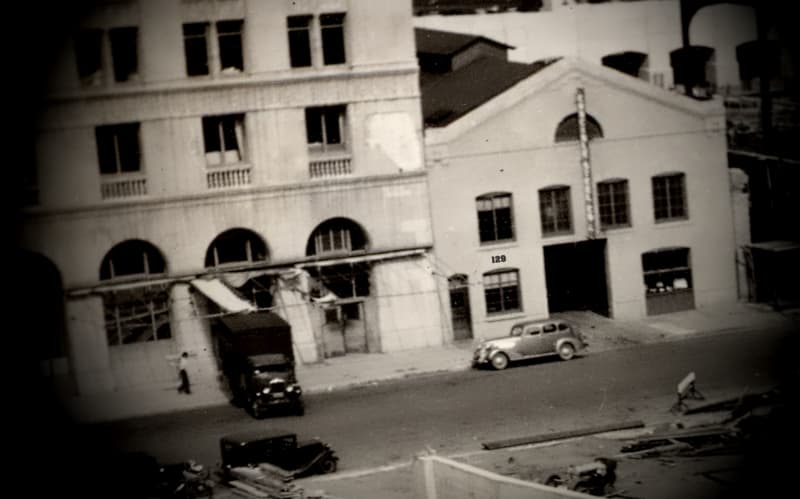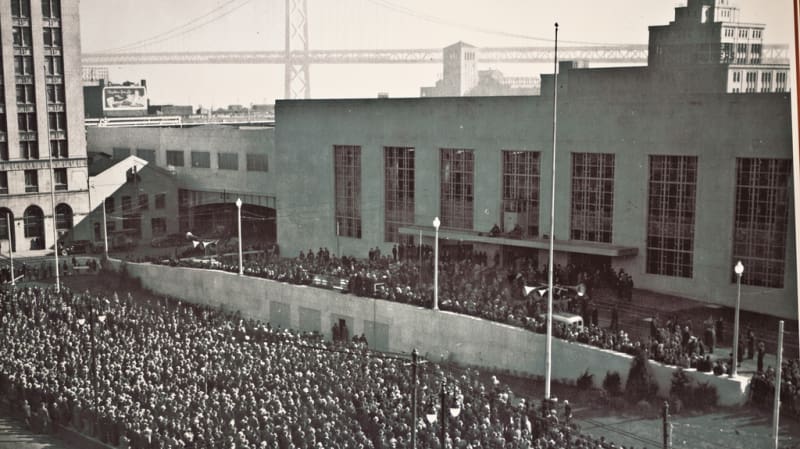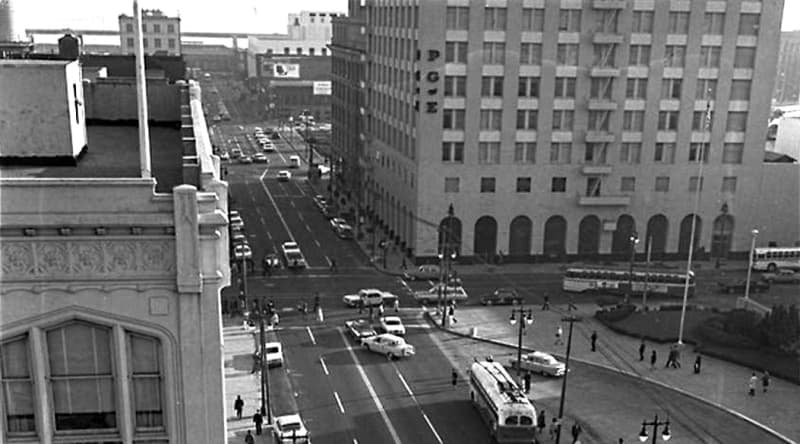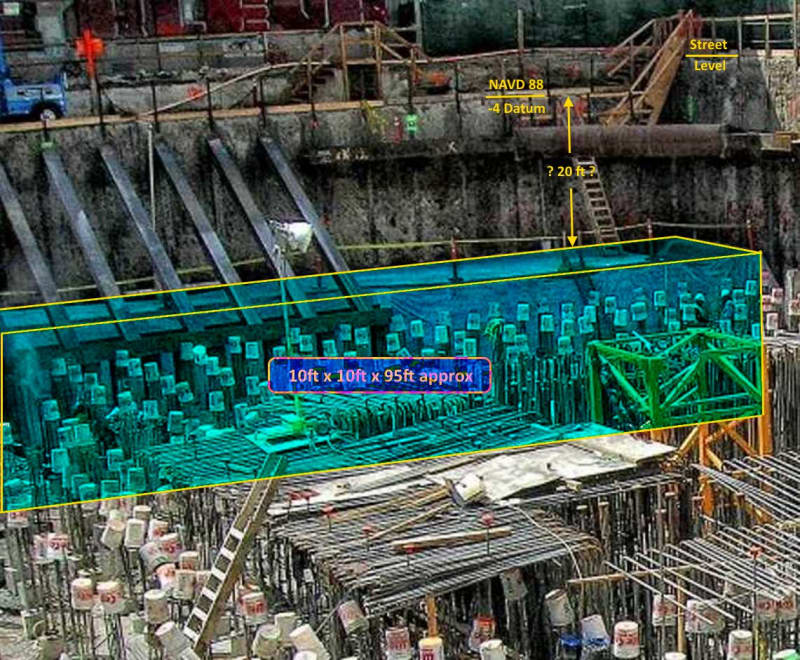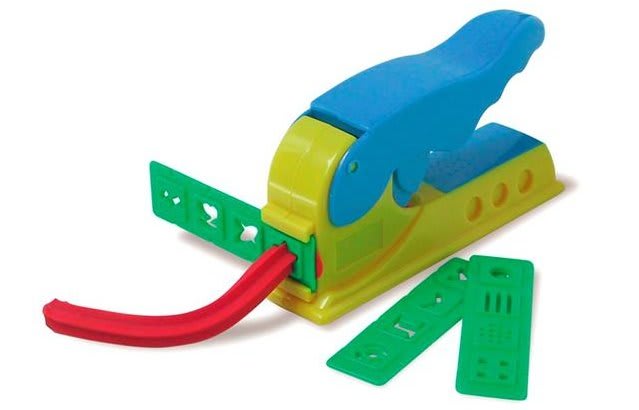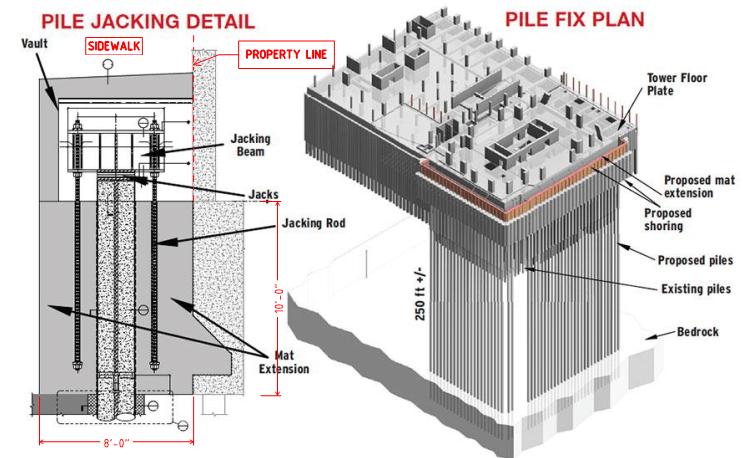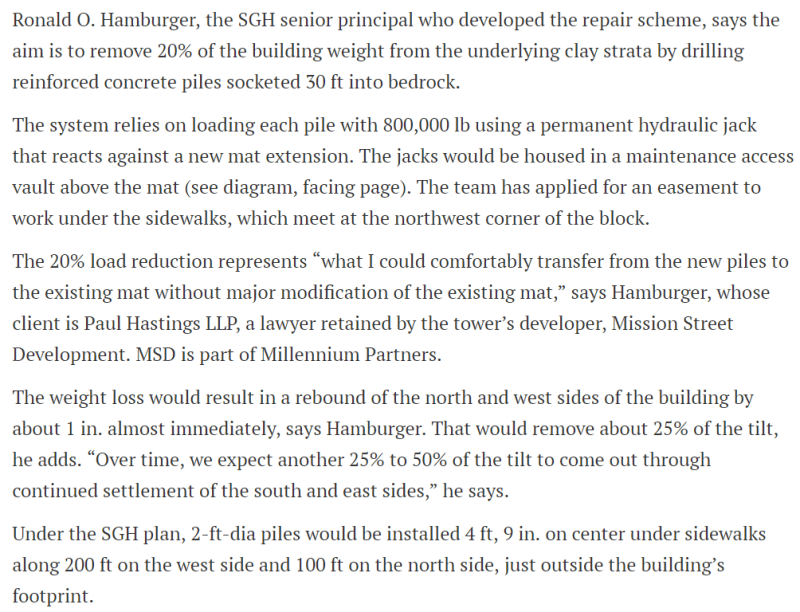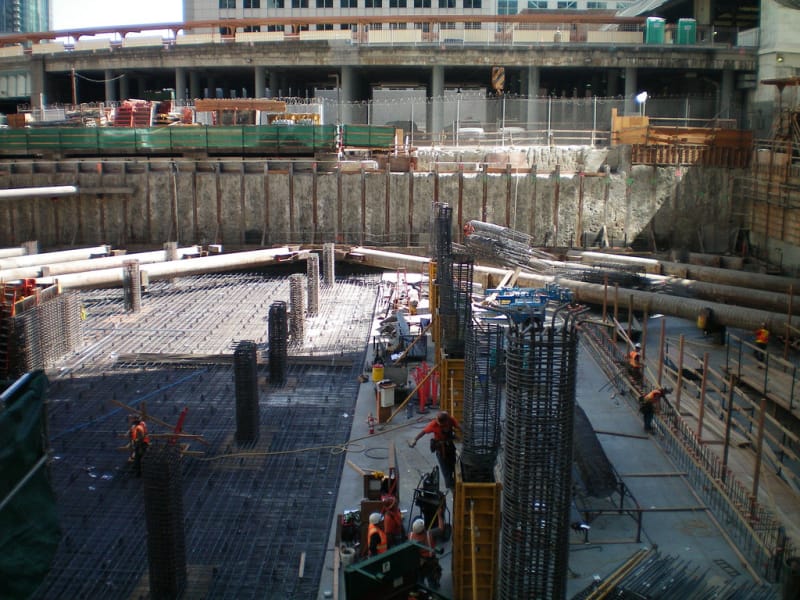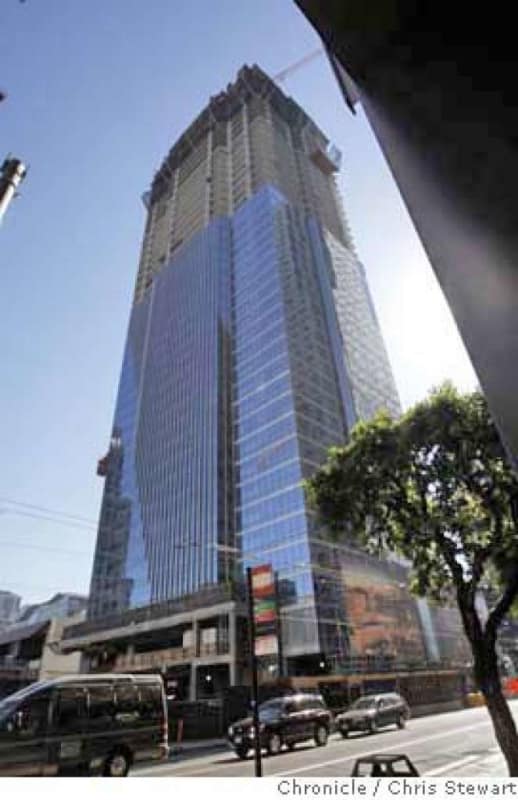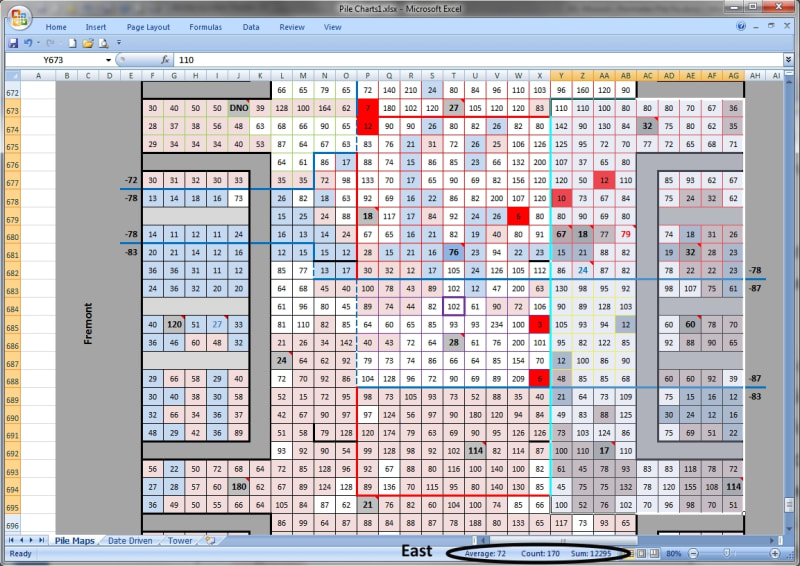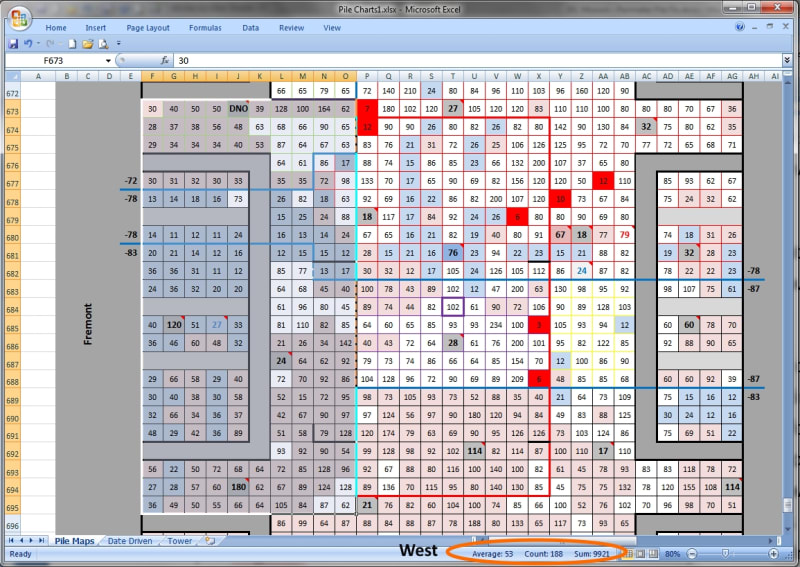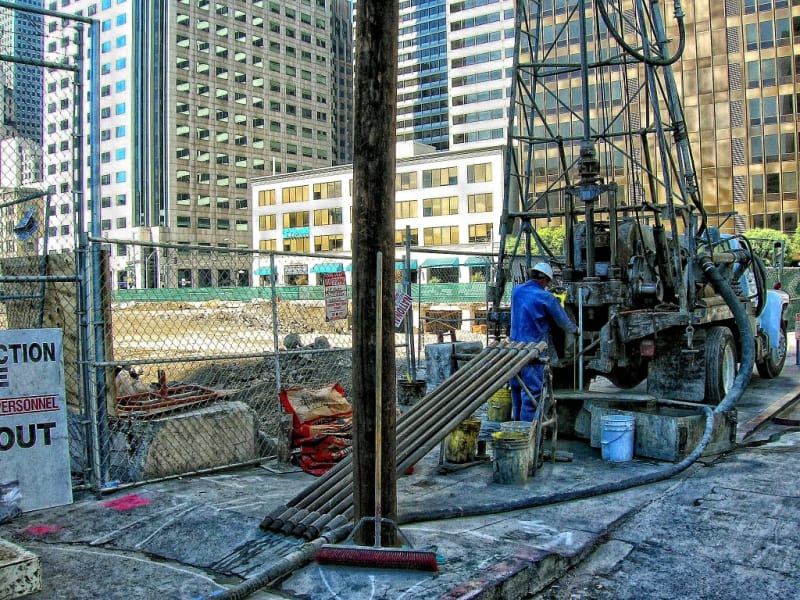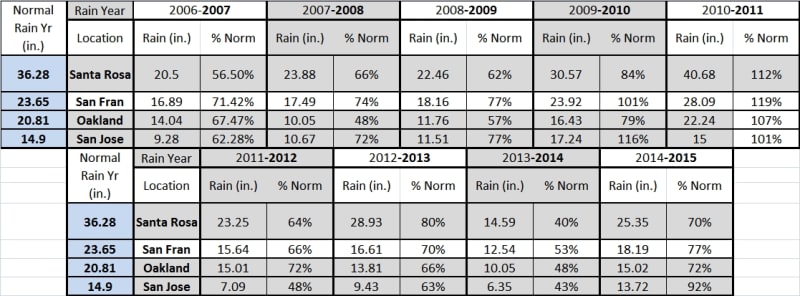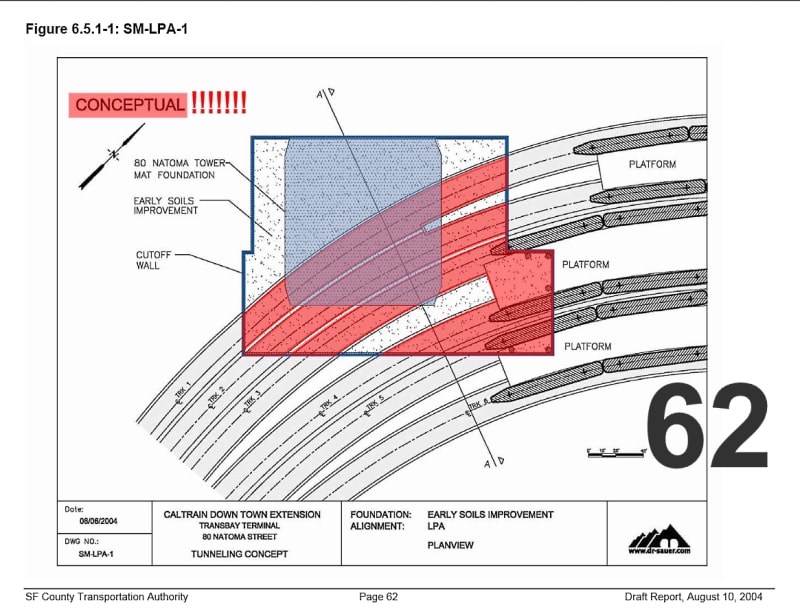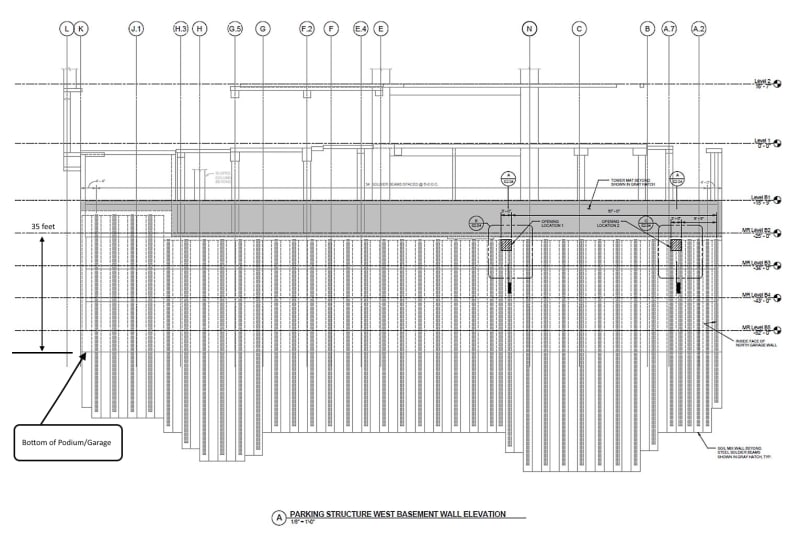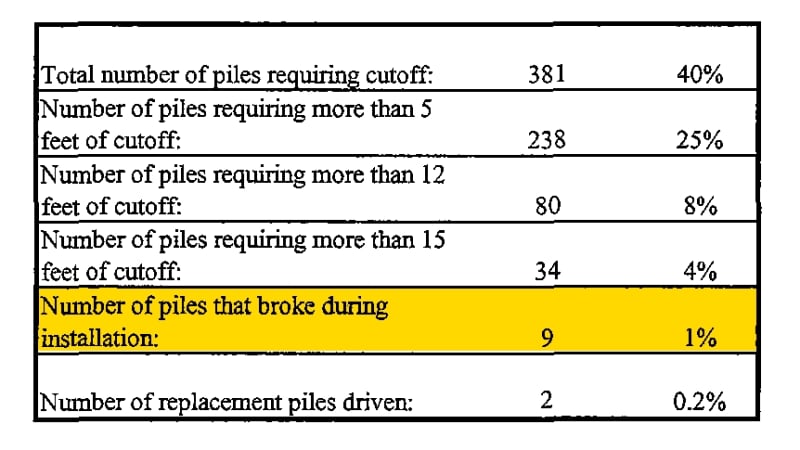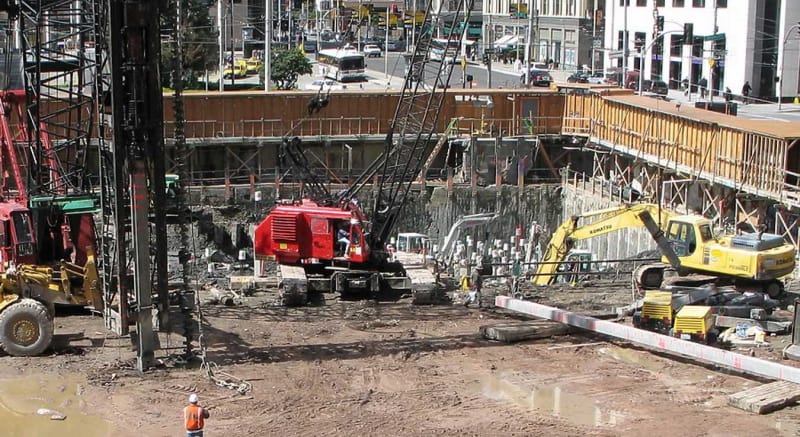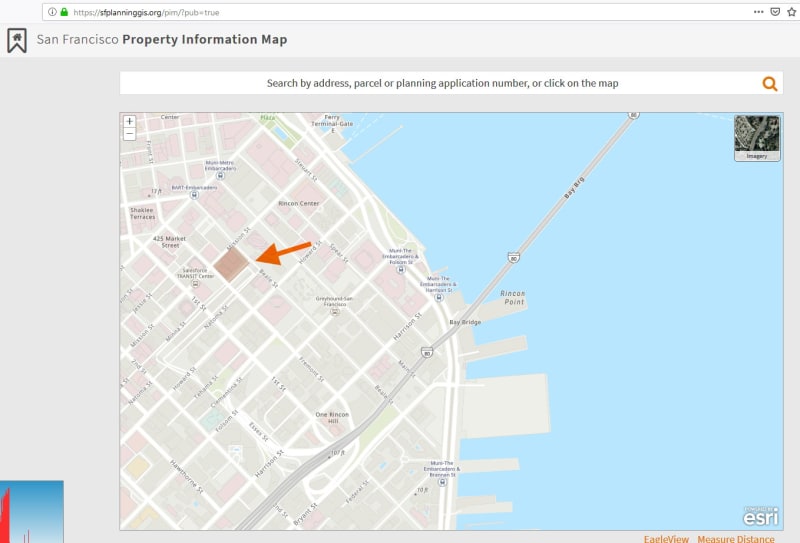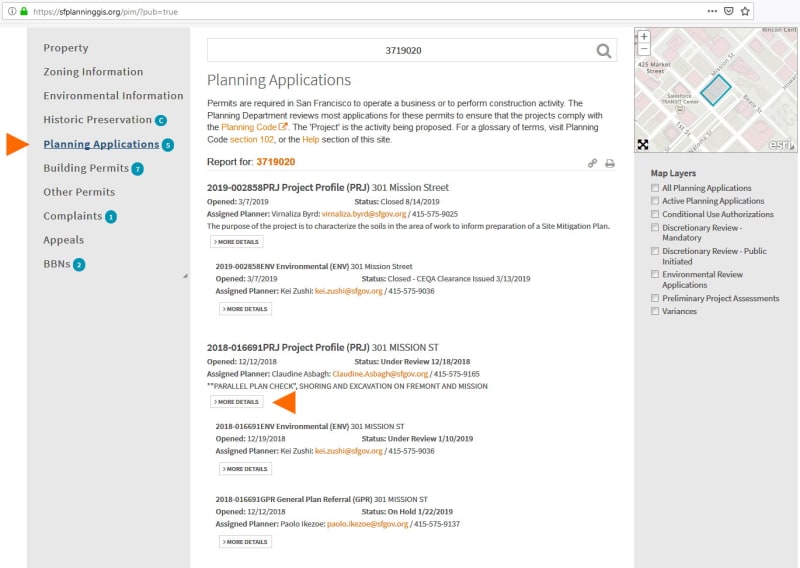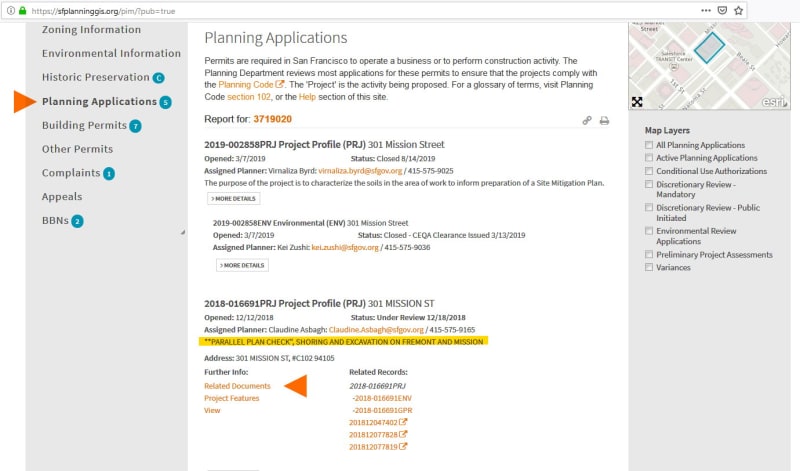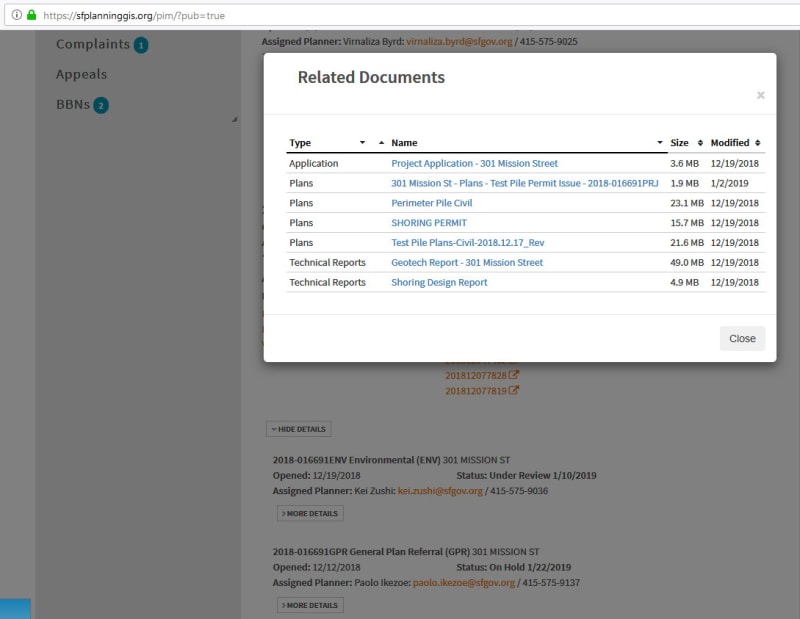Some details of the Pile Retrofit are up on the SF Planning Commission Permit site.
(Via SF Assessor’s Property Search Tool) Keep on mind that all of this is work performed by firms hired through Paul Hastings, LLP., attorneys for Mission Street Development/Millennium Partners. Parts of the reports just read as though they were written to the attorney’s critical eye.
The more interesting drawing details are in the “Shoring Permit” & “Test Pile Permit” plans. The SF Planning download website links seem to work intermittently.
I had hoped to discover how or if SG&H planned to form the extension of the mat foundation in a monolith on Fremont St & a monolith on Mission St. but there isn't any detailing of this portion of the work. Trying to get a 100' x 6’x 10’ or 150' x 6’ x 10’ block of concrete to slide up and down…, preferably "Up", 22 piles & 30 piles, respectively seems ambitious; especially since they need not all move equally.
Simpson, Gumpertz & Heger (SG&H) will have the foundation upgrade piles drilled and cast, then remove the top 10+ feet and recast a more plumb top of pile section. There is still the issue that the vertical travel up the piles won't be the same for all piles from south to north or east to west. While it is a small amount of travel, each pile must slide through 10 feet of concrete. Will they sleeve the tops of the piles? The upper portion of the steel pile casings, extending down into the soil, will have an anti-friction treatment, to prevent the piles from acting with the soil layers above the Old Bay Clay.
Shoring Permit (14pgs):
Link
Test Pile Permit (3pgs):
Link
The “Geotechnical report” & the “Shoring design report” are very detailed, perhaps to facilitate peer review or to better relate to people less familiar with construction (Lawyers, HOA).
Geotechnical Report (Report is 46 pgs of 301pgs):
Link
Shoring Design Report (55pgs):
Link
The work of excavating will take place in two phases from a top the shoring struts using a CAT 325F excavator (Shoring Design Report).
SG&H does not appear to be leaving any room in the pile vault for periodic inspection. There seems to be some objective in keeping this foundation upgrade 10 feet below ground surface. Perhaps they avoid having to obtain a sub-sidewalk lease from the city and would only pay an encroachment fee.
The Geotechnical report includes data from newly revealed subsurface boring data. There are also VS30 Shear Wave Velocity test results from the TJPA soil, adjacent to Millennium Tower, (Geo-pdf pgs. 208-301). They are on the low end of Site Class “D” and it makes one wonder if VS30 results between the Outrigger columns of the tower on Fremont St. would have been worse.
The Geotechnical report assigns, VS30 = 200 m/s at the mat foundation level (≈25 feet bgs; this will
be used in the time history selection).
The following Bore Holes, B-3 (Geo-pdf pg. 62) , B-6 (Geo-pdf pg. 81), PF-51 (Geo-pdf pg. 158) & TTB-08 (Geo-pdf pg. 115), run from the core west between the outriggers and represent the zone of piles with the lowest final foot blow counts. Piles in this area ranged from -80 to -85 feet bgs. Piles east of boring B-3 were mostly pre-augered & often driven to refusal, with nearly all having some portion of the pile top removed.
Sadly none of the Attachments cited in the Geotechnical report are included in this pdf file. If you do take a look at the Geotechnical report and the boring logs, something worth considering, regarding the Treadwell & Rollo borings; is that borings B-1 to B-5, were taken in 2001, when the planned tower was still 4 levels of basement, while borings B-6 & B-7 were taken in 2005, when only one basement level was to be considered.
The Test Pile Civil Plans & the Perimeter Pile Civil Plans are virtually identical with variations starting at pg 9. San Francisco has the nation’s largest Electric Trolley/Bus system and a look at the Civil plans gives you an idea of the headache the overhead wires are for this project.
Perimeter Pile Civil Plans (10pgs):
Link
Test Pile Civil Plans (10pgs):
Link
If there are any lingering doubts that this plan will work to support the tower, consider that Webcor did so with a CDSM shoring wall & 39+ Soldier Piles.
Scary Hi-Res Photo:
Link
In some of my earlier posts, I had assumed the strong-backs were tied to the tower mat by welds to the soldier piles. Later I thought the shoring engineer would have considered settlement and let the strong-backs remain free of the soldier piles but this photo shows the strong-backs were bolted to the soldier piles of the shoring wall.
I had remained suspicious. Mainly because the rate of settlement doubled when the last set of struts was removed from the excavation. Any increase in settlement should have taken place when the bottom struts were removed, not the top struts. Before the struts were removed the tower had settled 3.8 inches from Sep 2006 to Oct 2007. By Feb 2008, 4 months later, at the time of the Topping Off ceremony, the tower had settled 2 more inches, at double the rate, (6.07 inches total in 664 days).
Just imagine the weight of 42 floors (more than 75% of the final load), bearing down on the shoring wall while the tower settles 4 inches and then they pop the strong-backs loose from the shoring wall. Thankfully, the shoring wall was directly below the mat and not offset. Does the CDSM wall look to have a high cement content?
Podium/Midrise on 27 Sep 2007
Tower on 8 Oct 2007
The photo suggests the tower was probably tilting almost immediately from the time is began to settle and possibly settled back to the east partially, once the last struts were removed, before continuing to settle & tilt to the West-Northwest.
Maybe SG&H should first develop a history model of the influence of the podium/mid-rise shoring wall, the bottom of which may have penetrated the Old Bay Clay, on tilting & settlement during construction, before modeling the tower upgrade. Perhaps they should also perform a boring from the level 5 basement of the parking structure, midway north to south of the tower, since this is the one area neglected by Treadwell & Rollo’s subsurface investigation yet it is where piles between the east shear wall of the core and the northeast & southeast Out-rigger columns met with refusal. These piles were pre-augered for the first 30 feet below the mat. These piles were driven -78, -87 & -83 feet from north to south.
Here are the average blow counts for the piles between the outriggers east & west of the shear wall/core.
Some observations & comments about the Geotechnical report
7.1 Groundwater Conditions, (Geo pdf pg. 5)
The report offers a history of area dewatering but does not reference the original Treadwell & Rollo groundwater monitoring from the 301 project. Demolition at the 301 Mission site commenced on 2 Sep, 2005 & Treadwell & Rollo requested a SF Dept of Public Works permit for 4 monitoring well borings for Fremont, Mission & Beale streets on 16 Sep, 2005. This photo suggests the work took place, so where is the “Historical” data? Site demolition is not yet complete
The podium/mid-rise excavation was -60 bgs. I’m somewhat skeptical that the dewatering level for the podium/mid-rise excavation was only -40 bgs.
Webcor Builders stopped dewatering the 301 Mission site on 7 Feb, 2008 and no additional dewatering took place until April of 2013 (350 Mission/Webcor) & May of 2013 (Transit Center/Webcor). The Transit Center was the only project to use Cut-Off walls, into the Old Bay Clay. While the 1000 ft tall Salesforce Tower was being excavated, the SFPUC lost track of the amount of water the contractor was discharging from the site. The response by the SFPUC to inquiry by the SF Audit & Oversight Committee, investigating the Millennium Tower sinking & tilting, was very nonchalant; considering the tallest tower on the West Coast & the largest excavation by a regional public entity, were going on immediately adjacent to one another.
This photo from the Millennium Tower/CBS 60 Minutes segment clearly shows settlement to 350 Mission St.
350 Mission Project Detail:
Link
Millennium Partners/Mission Street Development, in earlier statements, eluded to the TJPA experiencing a CDSM shoring failure and water problem in 2011. The only occurrence I found, took place 1300 feet away, at the opposite end of the Transit Center project. It is mentioned in court documents, in a suit between Balfour Beatty Infrastructure & their Shoring Engineer contractor. The incident resulted in additional engineering of the cross lot bracing & waler system with particular reference to Zone 4 (Millennium Tower) but well in advance of any excavation in Zone 4.
One problem with wanting to blame other construction works for the settlement issues of Millennium Tower is that the dewatering, that took place during its construction (primary dewatering); is mostly responsible for any loss of support that may result from secondary dewatering by surrounding projects..., I can’t find the reference I wanted to post here but here is another, that references SF Old Bay Clay and is rather ominous and may describe what is taking place at Millennium Tower. I may have posted this link in an earlier post.
Link
Comment: The Geotechnical report is a composite of work by 3 different companies, John A. Egan (formerly with Sage), Shannon & Wilson, Inc. & SLATE Geotechnical Consultants. The following phrasing from the Geotechnical report has me wondering in what context it was meant and how it is understood by each of the 3 firms.
The Monte Carlo simulation indicates that the settlement magnitude is most strongly correlated with the value of the initial preconsolidation pressure. Improving the characterization of the preconsolidation pressure would improve the accuracy of the settlement estimates (Geo-pdf pg 16).
This seems to indicate that the predictions by some of the country’s leading geotechnical engineers, consultants & academics, regarding the earlier 50 story, 11 to 13 ksf concrete 80 Natoma tower, that was halted by SFDBI in 2004; is here being confirmed. Three of the consultants expressed the opinion, that if the TJPA were to excavate adjacent to 80 Natoma (without a buttress wall),
ground failure could occur. Yet that is exactly what the Millennium tower contractor did, while excavating the podium/mid-rise subgrade parking structure. The TJPA selected these consultants based on their knowledge of, layered soils & settlement, San Francisco Bay soils or both. You can read their comments in the link starting on pdf-page 157 or peruse the whole 80 Natoma saga starting on pdf-page 112. Some of the pages of the consultants remarks are missing due to scanning errors but the message is clear.
Link
When you read the TJPA consultants predictions for 80 Natoma, consider that Webcor, Treadwell & Rollo, UC Berkeley Prof. Jack Moehle & SFDBI’s Hanson Tom, were all hip deep into this project and yet just 9 months later were giving their blessings to a taller & heavier concrete tower with one less basement level, which included its own adjacent deep excavation.
Prof. Jack Moehle, as chair of the 80 Natoma peer review, (80 Natoma was a Shear Wall Core Only – Performance Based Design), chaired a publicly attended peer review meeting, fielding input from TJPA consultants both in attendance and via phone. Somehow the response given by the former head of the PEER's Tall Building Initiative, to the SF Govt. Audit & Oversight Committee, that he was only reviewing the structural part of the foundation, leaves a lot to be desired. He was supposed to be working for the city, as was SFDBI’s Hanson Tom.
Coincidentally, in February 2005, SFDBI’s manager of Structural Plan Review, Hanson Tom, P.E. was putting the final nails in the coffin of an Administrative Bulletin of SFDBI’s requirements for Geotechnical Reports.
The draft Administrative Bulletin process was initiated by the Code Advisory Committee of the SF Building Inspection Commission (BIC). It had started in May 2003. In May of 2004, while the fracas over 80 Natoma was going on; it was passed on to Hanson Tom. After 2 years and appearing on the Code Advisory Committee’s – Structural Sub-Committee calendar more than 13 times; the Administrative Bulletin of SFDBI’s “Requirements for Geotechnical Reports” was DOA. BIC oversees SFDBI. Its committee members are largely appointed by the mayor, as is all hiring at SFDBI.
Just one month later, Mission Street Development requested changes at the SF Planning Commission, to alter the 301 Mission project from 4 basement levels below the tower to one basement level.
I can't emphasize how bad was the decision making by the SF Planning Commission. The 5 foot easement along the 301 Mission St & TJPA property line was based on conversations between Mission Street Developement's DeSimone Consulting Engineers, Gary Handel Architects, Caltrans and the TJPA's & CalTrain's Downtown Train Station Extension consultant, Parsons. We don't know if Parsons would have changed how much easement would be needed due to the tower basement change. But Paeson as the Train path consultant, sure would have told the TJPA what was happening and just like 80 Natoma, the TJPA would have insisted on piles to bedrock. Costing the 301 Mission project 8 months.
The TJPA seems to have been oblivious to the changes for the 301 Mission project. In early 2006, they proposed a Top-Down phasing to the Transit Terminal. Pelli-Clark-Pelli proceed along this design path. They only seem to have become aware of the complications presented by the Millennium Tower in 2009. If the Top-Down engineering had been completed in 2006 and the Transit Terminal commenced, there would have been no way to build a buttress wall & train box beneath the new terminal hall and bus station.
With one poor decision by the SF Planning Commission and very likely little desire by Mission Street Development to communicate with the TJPA, their new construction plans; they cost the TJPA $58M and a buttress wall. The TJPA would have gladly written a check, to send the Millennium Tower piles to bedrock and costed it as under-pinning. The TJPA would not even have received an excavation notice from MSD, as the terminal property was still owned by Caltrans.
In 2004-5 Millennium Partners' other Luxury Mixed Use projects were getting long in the tooth and the occupancy rates of their hotels were across the board, below expectations based on their projects & borrowing. Project delays were not welcome. Webcor boasts on their website that they saved Millennium Partners 8 months and $6M by suggesting the shifting of 3 basement levels from the tower to the podium/mid-rise.
Maybe tall building project with large excavations should require a General Engineering Contractor instead of a General Building Contractor. In 2007, Webcor was bought by Obayashi Corp. This allowed Webcor to bid as a Joint-Venture GEC on the Transbay Transit Center but it remains a question how much General Engineering Contractor talent was committed to the Transit Center project. The staffing seems to have been all Webcor.
Bear in mind that since the Millennium Tower scandal broke, no one at SFDBI during any of the Govt. Audit & Oversight Committee hearings has demonstrated they process the required skill & knowledge to review Geotechnical Engineering reports. When Hanson Tom informed the Govt. Audit & Oversight Committee that they were powerless to compel Mission Street Development to hire a Geotechnical Engineer to perform peer review for the project; he failed to mention, that SFDBI itself was responsible for project review of the Geotechnical chapter/s of the SF building code.
Finally, there is SFDBI's Manager for Structual Review, Major Projects: Hanson Tom's, Valintine's Day Massacre
This completely contradicts Proposition "H" as passed by 70% of San Francisco voters, directing all elected officials & city employees to do nothing that would increase the costs of the Transbay BUS/TRAIN Transit Center or jeopardize the location at the old transit center site as already voted on by SF Voters.
Back when 80 Natoma became a major controversy, the BIC hired Shahriar Vahdani, Ph.D., P.E. to do the work SFDBI could not & compare the TJPA’s consultants’ work to that of Treadwell & Rollo.
Treadwell & Rollo, UC Berkeley’s Prof. Jack Moehle & SFDBI’s Hanson Tom don’t really look like they can claim some professional safe space. They all look like they turned a blind eye to the cautionary best intentions and weighty advice of their own professional peers.
The same can’t be said for the TJPA. The TJPA cannot be faulted for having failed to do their due diligence. Arup prepared areal groundwater settlement forecasts, performed timber pile extraction/settlement testing & shoring settlement estimates. The 80 Natoma consultants were also concerned about the seismic performance of the tower with the buttress wall. Subsequent research by Shahriar Vahdani - Thornton Tomasetti/FURGO…,
Report:
Link
Powerpoint:
Link
and more so by Ibrahim Almufti & Nick O’Riordan at Arup,
Link
…,regarding the new Transit Center and the effects of the adjacent Millennium Tower, actually show the buttress wall may improve the seismic response of the tower.
None of these models includes the buried PG&E vault.
Link
10.3 Lateral Load-Displacement Characteristics (Geo-pdf pg. 19)
Note that resistance to movement to the south is not considered in the analysis. This is due to the proximity of the Transbay Transit Center shoring wall to the Tower shoring wall, and the probable inability of the soil to achieve a passive state.
Comment: The Lateral Resistance section leaves me wondering why they include a shoring wall for the Transit Center but not the shoring walls of the tower & podium/mid-rise. I realize the shoring & buttress wall of the Transit Center represent a different animal but isn’t Lateral Resistance what shoring walls are about? The podium/midrise shoring wall supported a good portion of a 42 story building, bearing down on top of it. If the west face of the basement wall beneath the podium is 35 ft deep (65 bgs) but the shoring wall between the tower & podium is 55 to 65 ft deep (80 to 95 bgs), isn’t that the depth/height/area the soil is acting upon? I’m not sure what is being evaluated. Clearly. I'm missing something.
11.2 Foundation System Description (Geo-pdf pg. 20)
The Tower foundation system consists of 942 14-inch-square precast prestressed concrete piles, connected by a 10-foot mat acting as a pile cap (947 total piles were driven, but 5 were broken during installation).
Comment: The last page of the Pile installation field report prepared by Martin M. Ron (Surveyor) & Treadwell & Rollo (Geotechnical Engineer), showed there were 9 broken piles and two replacements, totally 938 working piles. John Egan (formerly with Sage Engineers), has been working on this since 2014, hopefully it was one of the other more recently contracted firms that hasn’t quite figured out how many piles there are.
Geo-pdf pg. 145 Cotton – Shires: Boring Operation at SD-2 @-194 ft. drilling mud began seeping in the tower basement. Geo-pdf pg. 150 Cotton – Shires: Boring Operation at SD-3 @ -11 ft drilling mud seeping in the tower basement.
Comment: This got me wondering about the quality of the backfill materials used by Webcor Bldrs. and what if any structures might remain outside the tower footprint. The previous building at the corner of Mission & Fremont had a sub-sidewalk basement. It was still there after demolition and Webcor used the walls of the sub-sidewalk as temporary shoring. Did they just back fill between the sub-sidewalk basement wall & the tower? If so, the Foundation Upgrade contractor may be in for a surprise. Both Treadwell & Rollo & Sage encountered a 6 ft thick section of concrete during boring operations (Geo-pdf pg 165), Sage - Boring B-1 on Fremont St. (Concrete at 12 ft to 18 ft).
Sub-sidewalk walls of the tower excavation:
The bottom of the tower excavations by Webcor Bldrs. along Fremont & Mission Street contains copious demolition debris, as evidenced by every subsequent boring. What was the quality of the backfill used for the PG&E vault buried under the 3 ft. cantilever slab? I’d expect PG&E would have required inspection services during the backfill of the vault.
The Monte Carlos simulations only show the 10 ft mat and not the 3 ft cantilever slab portion of the tower foundation. There isn’t any explanation accounting for the absence of the cantilever slab. If the cantilever slab was included, a footnote would help. If it wasn’t, then what good are the Monte Carlo simulations?
Figure A-12 (Geo-pdf pg. 200) shows the estimated tilt correction over the next 40 years. With this, there is an expectation that the mat will, as a result of the foundation upgrade, settle to the East & to the South. This will no doubt cause additional cracking & movement in the basement walls.
Looking at Arup’s placement of crack monitors, and which have been the most active, alongside the differential settlement contours; it is easy to see that there is already an accumulation of stress between the 3 ft. cantilever slab & the 10 ft. mat. The walls in the tower basement, immediately adjacent to the cantilever slab, that in effect, buttressed the cantilever slab, have cracked considerably. The cracking would have been much worse, were it not for the tilt/settlement at the northwest end of the tower. The question is how much upward bending stress can the cantilever slab tolerate? If the cantilever slab were to crack where it joins the 10 ft mat, the crack could potentially travel from one point of confinement to the next, in the direction of the mat. Or from the reentrant corner, where the 3 ft. cantilever meets the 10 ft mat foundation, then up through the mat, to the outside edge of the sloped SMRF & upturned beams.

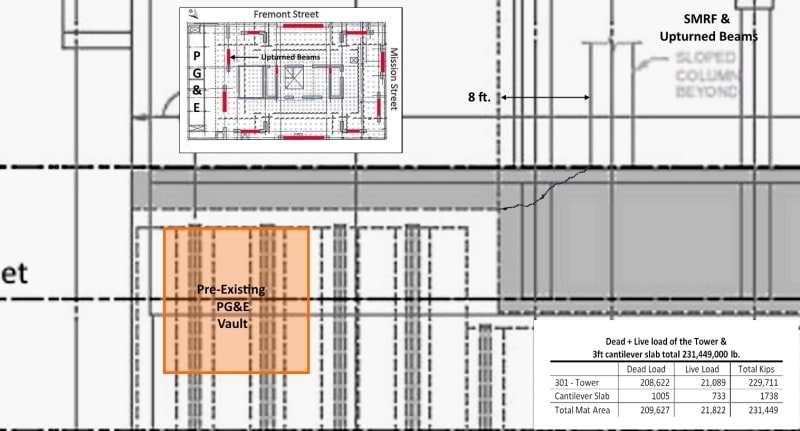
I would repair the existing cracks in the basement before applying any load to the upgrade piles. If you don’t agree, I’d love to know why.
I think that is enough for now. So much for my redesign of the tower lobby, featuring a Koi pond.
